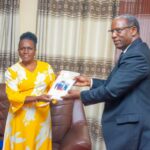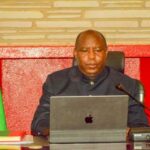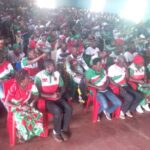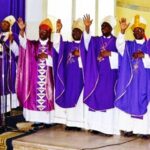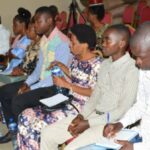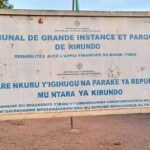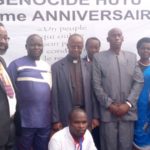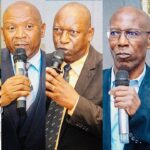As the 26th Summit of the African Union comes to a close, warnings of ethnic hostility and genocide in Burundi continue with force. It’s no surprise that a society so deeply traumatized by past violence should believe in and disseminate such alarmist  theories. However, here, as elsewhere, misrepresentations of reality only serve to perpetuate more violence.
theories. However, here, as elsewhere, misrepresentations of reality only serve to perpetuate more violence.
The word “genocide” has been haunting Burundi for two years now. Some have used it because they fear a repeat of the 1994 Rwandan tragedy, while others have manipulated the word to draw the attention of the powerful toward the Great African Lakes region. But it has been taken to a new and peculiar dimension after the Dec. 11, 2015 attacks coordinated against three military camps in Bujumbura, as the neighborhood clashes that followed were promptly branded “ethnically-motivated massacres” by some of the public.
However, if one lives in Bujumbura, or consults the data, the facts are undeniable: since Dec. 11, nights in the Burundian capital have been calmer than before. Stories emerging from the violence tend to focus on the innocent victims and human rights violations that occurred, but it’s also important to highlight that members of neighborhood “vigilante” groups, the armed young people patrolling “protester” neighborhoods, perished during the Dec. 11 clashes. Their absence may explain the decrease in nightly gunfire and explosions, as well as in the number of attacks against police.
Some narratives of the post-Dec. 11 clashes devolved into claims that a government-led manhunt was being aimed at the Tutsi youth of rebel neighborhoods, claims that have led to the growing media perception of the threat of a genocide in Burundi. The reality is that the security forces’ repression of the growing urban guerrilla movement has been accompanied by a gradual ethnic homogenization of the youth involved in the armed resistance against Pierre Nkurunziza’s government. An article released by the Burundi based think-tank Alma Parens explains this process:
In April 2015, street protests against Nkurunziza’s third term were fueled by the presence of FLN (National Forces of Liberation) members loyal to leader Agathon Rwasa, though he never officially ordered them to take to the streets. The protesters, many of whom were former combatants, helped to spread the movement into districts such as Kanyosha and Buterere. Some were even mercenaries who were paid to assault the police.
However, the communication strategy employed by the leaders of the anti-third term movement was to conflate youth affiliated with the ruling party, the Imbonerakure, with the Rwandan Hutu Youth of 1994, the Interahamwe. In Nyakabiga, a neighborhood infamous for violence against Hutu in 1994 and 1995, an Imbonerakure was burnt to death. Meanwhile, Rwandophone Burundians with “Hutu features” were accused of being Interahamwe, thus further alienating Hutu from the protest movement.
The May 2015 coup, the early indications of Rwanda’s implicit support of the protest movement, Rwasa’s official participation in the electoral process before he fully entered the government, and the assassination of Lieutenant-General Adolphe Nshimirimana were all instrumental in eroding the involvement of pro-Rwasa FNL members in the protest movement, the majority of whom were Hutu. Confronted by the possibility of repression like that experienced in the aftermath of the 2010 elections, FNL members saw the entrance of their leader into institutional legitimacy as a quick escape route from an anti-Nkurunziza movement that was preparing to take up arms. Were it not for that, the violent pursuit following the elections would have been directed at FNL members.
The destabilizing operations of the security apparatus directed against the Burundian police on the grounds of repression intensified in the absence of the FNL. In September 2015 the urban armed resistance began to take on a more homogeneous ethnic character than in the beginning of the protests in May, and the young Tutsi of the Movement for Solidarity and Democracy, or MSD, were pushed to the front after the retreat of the FNL. This was followed by U.S. sanctions imposed on MSD president Alexis Sinduhije due to accusations of inciting violence.
One must keep in mind that the police and military are made up of both Hutu and Tutsi. When young people throw grenades at the police, both Hutu and Tutsi are injured or killed. Therefore, there isn’t a “Tutsi manhunt” as such. The situation is much more complex.
The allegations of genocide and ethnically-motivated massacres in Burundi are therefore untrue, both from a legal and factual perspective. The current situation is similar to what took place after the elections in 2010, when the ruling party, majority Hutu, didn’t hesitate to harass, kill, or exile the Hutu who supported Rwasa, not because they were Hutu but because the majority-Hutu, pro-Rwasa FNL was perceived as inciting insecurity in the capital and Bujumbura Rural Province. The same process is occurring five years later with the MSD. In fact, the similarities between 2015 and 2010 go even farther; in both cases we see attempts to reshape the political landscape (alliances, coalitions, rebellions, etc.) after the failure to unify opposition before the elections.
A crucial impediment to Burundian democracy is a public perception of a lack of transparency. As radical opposition leader of the MSD Sinduhije said, “The main issue with Nkurunziza is that he won’t allow the opposition to lose openly.” Thus the political dialogue to come must focus on the efficacy, of lack thereof, of the electoral process since 2010 so that Burundi can avoid further electoral violence. But perhaps a more pressing issue is the lack of attention given to Burundian youth, who, without viable prospects for the future and prone to malleable memories of the past, are those most easily manipulated by elite interests. Whether it’s with FNL or MSD, electoral violence in Burundi is a lethal machine fueled primarily by the blood of young people. The best way for policymakers and politicians to break the complex cycle of violence in Burundi is therefore to quickly address and alleviate the distressing conditions confronting its youth.
*****
*****
Roland Rugero is a Burundian writer and journalist.


